
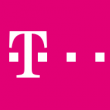
Deutsche Telekom (DT) is preparing the roll out of its 5G-ready LTE-M technology in 2019 with the accelerated development of LTE-M solutions. The company today unveils the finalists of the hubraum LTE-M Prototyping program at a summit in Vienna, Austria. (more…)
November 22, 2018
Posted by: Anasia D'mello
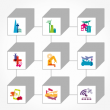
Blockchain networks are secure, redundant and self-healing. When deployed they “build trust, reduce costs and accelerate transactions”. The quote comes from IBM. The company has more than 1,000 staff and $200 million invested in the blockchain-powered IoT. Deployments have been made by Maersk, a cargo shipping giant, and Walmart, the world’s biggest retailer, but small and medium-sized enterprises can obtain similar benefits. Blockchain is a mainstream development that really does break new ground, as did the Internet and voice followed by video over IP. (more…)
November 19, 2018
Posted by: IoT global network
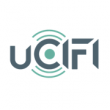
MinebeaMitsumi Group, a global provider of Electro Mechanics Solutions, and its European Research & Development centre, Paradox Engineering, specialists in wireless technologies and IoT solutions for smart cities, have joined the uCIFI Alliance. (more…)
November 5, 2018
Posted by: Anasia D'mello

The first person I ran into at last week’s IoT Solutions World Congress 2018 in Barcelona was an old friend of IoT Now’s who shall remain nameless. He looked exhausted. I had arrived a few hours after him on the first day. (more…)
October 26, 2018
Posted by: Anasia D'mello
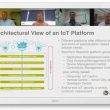
If you missed the webinar don’t worry!
Catch up with our highlights below and register here to stream the live recording.
Participants: IoT Now, IoT M2M Council, ARM, Beecham Research
Highlights
The Webinar started with two on-line polls of the areas of interest and the challenges of the participants. The first was the role of IoT in the organisation: user, OEM, application developer, solutions vendor, or systems integrator / consultant. About 50% were solution vendors and 50% users of various types, including consultants. This is more or less as expected. The second was the challenges: government regulation; internal conflicts, difficult to establish the right businesses model; lack of funding / skills; interoperability and standards. The business model was seen as the primary challenge, with interoperability also a significant challenge.
The on-line polls were followed by an introduction to IoT platforms and their use in the marketplace. Topics covered included the four key components: the application development layer plus the data, device and connectivity management layers, which are becoming increasingly complex. This was followed by an architectural view of the platform, i.e. the four main components, plus three additional categories – consumer centric, vertical-centric, such as Smart City platforms, and developer centric, plus end-to-end security which affects all categories.
This was followed by a graph showing the accelerating growth in the number of platforms in recent years. It is not slowing down: over 400 in 2016; 450 in 2017; over 500 right now and counting. Consolidation is taking place, but not a lot. Big companies are acquiring smaller companies in order to add more functionality. The wide choice will continue for the foreseeable future, hence the need for a way of helping users match their IoT requirements with the relevant platform or platforms.
That is something Beecham Research and IoT Global Network have been working on and now there is an online platform-matching tool known as IoT Pilot. It is free for adopters and has been designed to help enterprises evaluate and navigate the IoT platform landscape. This tool is not intended to generate a final selection; the aim is to provide an objective short list of candidate platforms.
Usage of the tool starts by entering responses to key questions. IoT Pilot employs the resulting search data to match the user‘s needs with a database of IoT platforms and create a short list that is available online straightaway. The same data is also summarised and analysed by Beecham Research to highlight emerging trends in the market place as well as key user requirements and concerns.
The short list identifies the name of the platform and the vendor, the category, plus a “heat map” of the platform’s strengths and weaknesses. Heat maps are a visual representation of capability of the various components of the platform: they are the results of analysis conducted by Beecham Research. In addition, there is a button on some of the individual platform pages that users can employ to auto-generate an email containing their selection criteria, to start a discussion with selected vendors.
Once users have a short list of platforms to look at – what next? Ideally they will want to approach some vendors with a list of questions to answer, so they can make a final selection and move towards implementing their chosen IoT solution. This is where work on an IoT software RFP, fronted by the IMC and on which Beecham Research also worked, comes into focus. A template RFP covering IoT platforms was created from this work that includes nearly 100 questions to ask platform vendors in order to learn more about their capabilities. This RFP template is available from the IMC (www.iotm2mcouncil.org).
October 19, 2018
Posted by: IoT global network
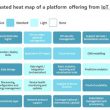
While you can do IoT without an IoT platform, it certainly aids getting an IoT solution up and running quickly and probably at lower cost than alternative approaches. Middleware is needed to enable communications between the OT (operation technology) domain where data is generated and the business IT (information technology) domain where it is used. That’s the baseline function of an IoT platform. Middleware is also employed to facilitate secure monitoring, control and analysis of device and sensor behaviour in the field. IoT platforms are therefore a key enabling product. Their functionality largely determines the performance and efficiency of IoT solutions.
Given the prognosis for the growth of IoT it is hardly surprising that a plethora of platform vendors have thrown their hat into the arena. Depending on what the term ‘IoT platform’ covers, right now there are upwards of 500 in the market in all shapes and sizes. That means the market is ultra-competitive and it is also confusing because vendors make similar, often overhyped claims for their product. In addition, it is hard to make apples versus apples comparisons since the platforms often address different requirements. A solution that employs over a hundred thousand devices will need a platform that is communications centric. One that requires integration with existing enterprise systems required will require a robust device management capability.
Those are two of five major categories that Beecham Research employs. In addition to device management and connectivity they include security, application development and data management/analytics as well as vertical market-specific platforms, such as Smart City oriented and developer-oriented. Vendors will typically focus on their area of expertise, but platform strengths have to align with solution needs: it’s a make or break issue. Therefore the requisite solution may involve a combination of different platforms covering different layers in the overall IoT stack.
Replacing confusion with clarity
Evaluating the performance of 500 platforms is clearly a difficult, time-consuming process and it becomes an even more significant issue when two or more platforms are required. Users may elect to “play safe” and go with one of the heavy hitters. However – which one? This can also result in a platform that is expensive, over-engineered and not optimised for the particular solution requirement.
Beecham Research recognised the emergence of this issue and created a comprehensive database on the various platforms as well as a matching tool known as IoT Pilot. Users enter their baseline requirements and IoT Pilot is then employed to navigate the database and give the user a list of vendors whose products match the performance criteria.
Performance parameters are analysed and presented in a structured way for all products, which facilitates comparisons. In addition, there is background information on the relevant vendors, bullet points on the key strengths and categories, together with a “heat map”. This is a 5 x 5 matrix (example above) comprising performance indicators mapped against generic platform functionality. These maps allow users to see a platform’s functionality and performance parameters and thereby obtain a holistic, memorable impression.
In a nutshell, the service replaces multiple product confusion with insightful clarity.
Posted by: IoT global network

When you arrive at Fog World Congress 2018, watch out for the robots. Autonomous mapping robots will be traversing and mapping the venue floor in real-time for conference attendees. (more…)
September 14, 2018
Posted by: Anasia D'mello

September 13, 2018
Posted by: IoT global network

Event organisers announced the lineup of more than 60 presenters, session tracks, tutorials and panel sessions for Fog World Congress 2018, produced by the OpenFog Consortium in collaboration with (more…)
August 27, 2018
Posted by: Anasia D'mello

Last month saw two major telecoms and tech events take place in two very different cities, in the space of just two weeks. First came 5G World – part of London Tech Week’s TechXLR8 – which encompassed eight separate events that (more…)
August 15, 2018
Posted by: Anasia D'mello